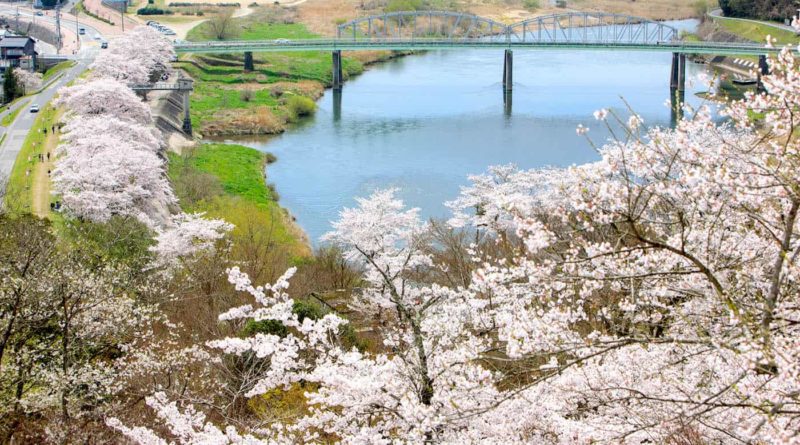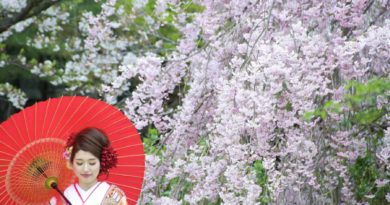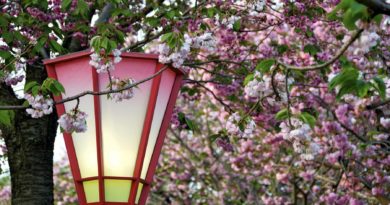Ozekiyama Park
This pleasant hilltop park on the edge of Miyoshi’s historical district is best known for its cherry blossoms and autumn colors.
Although it is thought that Ozeki-yama may have been the site of a castle in medieval times, but it gets its name from the Fukushima clan retainer, Ozeki Masakatsu, who established a castle here early in the Edo period (early 1600s). When the Asano clan took over rule of the Hiroshima area, then known as Aki, Asano Nagaharu was installed as ruler of Miyoshi and developed the 202m high hill top, building residences and even an astronomical observatory. There is little evidence of the castle today, but with excellent views over the rooftops of the town and the Go-no-kawa River below, one can see why it was chosen as a base of operations.
A tanka by one of Japan’s great modern poets, Nakamura Kenkichi, who was born in Miyoshi (though he later lived near Senko-ji Temple in Onomichi), is innscribed in a large stone monument.
この山の 桜にむかひ 流れくる
川ひろくして 水のひかれるKono yama no sakura ni muka hi nagare kuru
Kawa hiroku shite mizu no hikareruRun over water and wide river
that flows to these mountain cherry trees.
In spring Ozekiyama is indeed a sakura mountain, with over 1000 cherry trees in bloom it is an understandably popular hanami spot and is the venue for the town’s annual Sakura Matsuri in early April. Many people also come in the Autumn when it is the turn of the momji maple tress to dazzle with their deep red colors.
Ozekiyama, however, a nice place to stroll at any time of the year. I visited in the middle of winter and although the trees were looking a little forlorn it is nice to wander the paths and take in the river views.
The riverside path alongside of park also as some interesting shrines and an early 17th century Kirishitan Christian stone lantern which is thought to have been tossed into the Go-no-kawa River from it’s original location at Seikou-ji Temple at the bottom of nearby Mt. Higuma-yama.
Another historical reference is the statue of Princess Akuri (also known as Youzenin), the wife of Asano Naganori, the unfortunate lord who’s murder set in motion the tale of the 47 Ronin. She stands behind the statue of a young girl holding a dove next to a picturesque pond.







